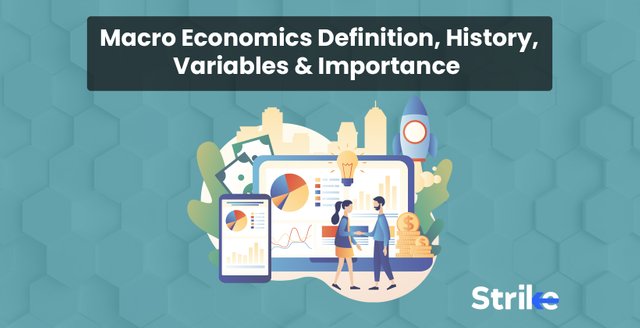
Introduction to Macroeconomics:
Macroeconomics is a branch of economics that deals with the performance, structure, and behavior of an economy as a whole. It focuses on aggregate measures such as national income, unemployment rates, inflation, and overall economic growth. Unlike microeconomics, which studies individual markets and their interactions, macroeconomics examines the broader trends and patterns that affect entire economies. In this article, we will delve into the fundamental concepts of macroeconomics, exploring key theories, principles, and policies that shape economic outcomes on a national and global scale.
Gross Domestic Product (GDP):
Gross Domestic Product (GDP) serves as a primary indicator of a nation's economic health. It measures the total monetary value of all goods and services produced within a country's borders over a specific period, typically a year or a quarter. GDP can be calculated using three approaches: the production approach, income approach, and expenditure approach. Each method provides valuable insights into different aspects of economic activity. GDP growth is crucial for assessing the overall health and performance of an economy, with sustained growth indicating increasing production and prosperity.
Unemployment:
Unemployment refers to the situation where individuals who are willing and able to work cannot find employment opportunities. It is a critical macroeconomic indicator that reflects the efficiency of labor markets and the utilization of human resources within an economy. Economies aim to achieve full employment, where the unemployment rate is minimal, typically around 4-5%. Different types of unemployment exist, including frictional, structural, and cyclical unemployment, each resulting from distinct factors and conditions. Policymakers employ various measures, such as fiscal and monetary policies, to address unemployment and promote job creation.
Inflation:
Inflation is the rate at which the general level of prices for goods and services rises over time, leading to a decrease in the purchasing power of money. While moderate inflation is considered normal in a growing economy, high or hyperinflation can have detrimental effects, such as eroding savings, distorting price signals, and reducing consumer confidence. Central banks closely monitor inflation and aim to maintain price stability through monetary policy tools like interest rate adjustments and open market operations. Understanding the causes and consequences of inflation is essential for policymakers and businesses to make informed decisions.
Fiscal Policy:
Fiscal policy involves the use of government spending and taxation to influence the economy. It aims to achieve various macroeconomic objectives, including economic growth, price stability, and full employment. Governments utilize fiscal policy tools such as changes in taxation, government spending programs, and budgetary allocations to stimulate or cool down economic activity. Effective fiscal policy requires a delicate balance between promoting growth and ensuring fiscal sustainability to avoid excessive budget deficits or debt accumulation.
Monetary Policy:
Monetary policy refers to the actions undertaken by a central bank to control the money supply and interest rates to achieve macroeconomic goals. Central banks employ monetary policy tools like open market operations, reserve requirements, and discount rates to influence lending, borrowing, and spending behavior in the economy. The primary objectives of monetary policy typically include price stability, full employment, and moderate long-term interest rates. Central bankers carefully assess economic indicators such as inflation, GDP growth, and unemployment to determine appropriate policy responses.
Exchange Rates:
Exchange rates play a crucial role in international trade and financial transactions, determining the value of one currency relative to another. Fluctuations in exchange rates can impact a nation's trade balance, competitiveness, and capital flows. Governments and central banks may intervene in currency markets to stabilize exchange rates or pursue strategic objectives such as export promotion or import substitution. Understanding exchange rate dynamics is essential for businesses engaged in international trade and investors with foreign assets or liabilities.
Economic Growth and Development:
Economic growth refers to the sustained increase in an economy's production capacity over time, leading to rising incomes, living standards, and opportunities. Economic development encompasses broader societal goals, including poverty reduction, equitable distribution of resources, and improvements in healthcare and education. Policies aimed at promoting economic growth and development may involve investments in infrastructure, human capital, technology, and institutions. Sustainable development emphasizes the need to balance economic growth with environmental conservation and social welfare considerations.
Conclusion:
Macroeconomics provides a framework for understanding the complex interactions and dynamics of modern economies. By analyzing aggregate indicators such as GDP, unemployment, inflation, fiscal policy, monetary policy, exchange rates, and economic growth, policymakers and analysts can formulate informed decisions to promote prosperity and stability. A deeper comprehension of macroeconomic principles is essential for navigating the challenges and opportunities in an increasingly interconnected global economy.